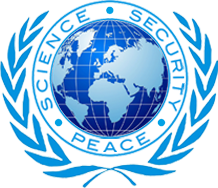Dr. John Hagelin Presents the GUSP Approach to Peace
at the 19th World Summit of Nobel Peace Laureates
On September 20, 2024, GUSP international president Dr. John Hagelin addressed the 19th World Summit of Nobel Peace Laureates and presented the innovative, field-tested, evidence-based approach to peace supported by the Global Union of Scientists for Peace. Given the state of the world today, Dr. Hagelin’s presentation on this global stage was a powerful and timely call to action to create peace in our time.
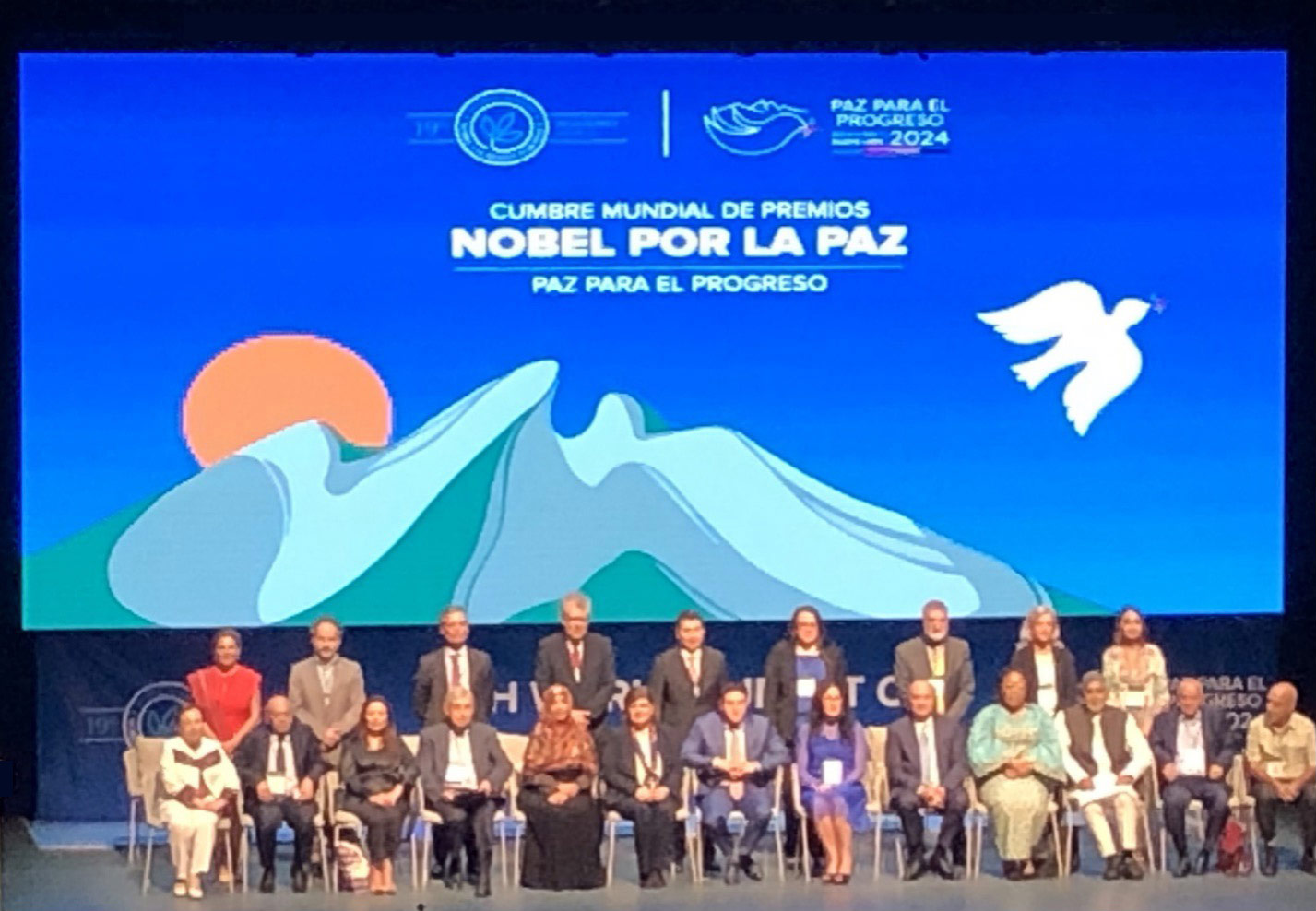
Nobel Peace Laureates and conference organizers at the opening of the World Summit.
A globally prestigious gathering
The World Summit of Nobel Peace Laureates is one of the most prestigious gatherings in the field of peacemaking. Launched in 1999 by Mikael Gorbachev, who won the Nobel Peace Prize in 1990 for his role in helping end the Cold War, this annual conference brings together Nobel Peace Laureates, renowned leaders of peace organizations, peace activists, distinguished academics, and hundreds of college and university students from around the world to address global issues related to peace and to explore new avenues for peace creation on earth.
This year’s Summit was held in Monterrey, Mexico, from September 18 to 21. It was structured around seven key themes related to peace, with panel discussions led by 15 Nobel Peace Laureates and many other widely recognized global leaders in the field of peace. Over 1,500 enthusiastic students attended, many of them presenting “Peace Labs” about their own peace-creating efforts. Many leaders of peace organizations and universities presented complementary workshops as well to explore new approaches to peace and create collaborative initiatives with other Summit participants.
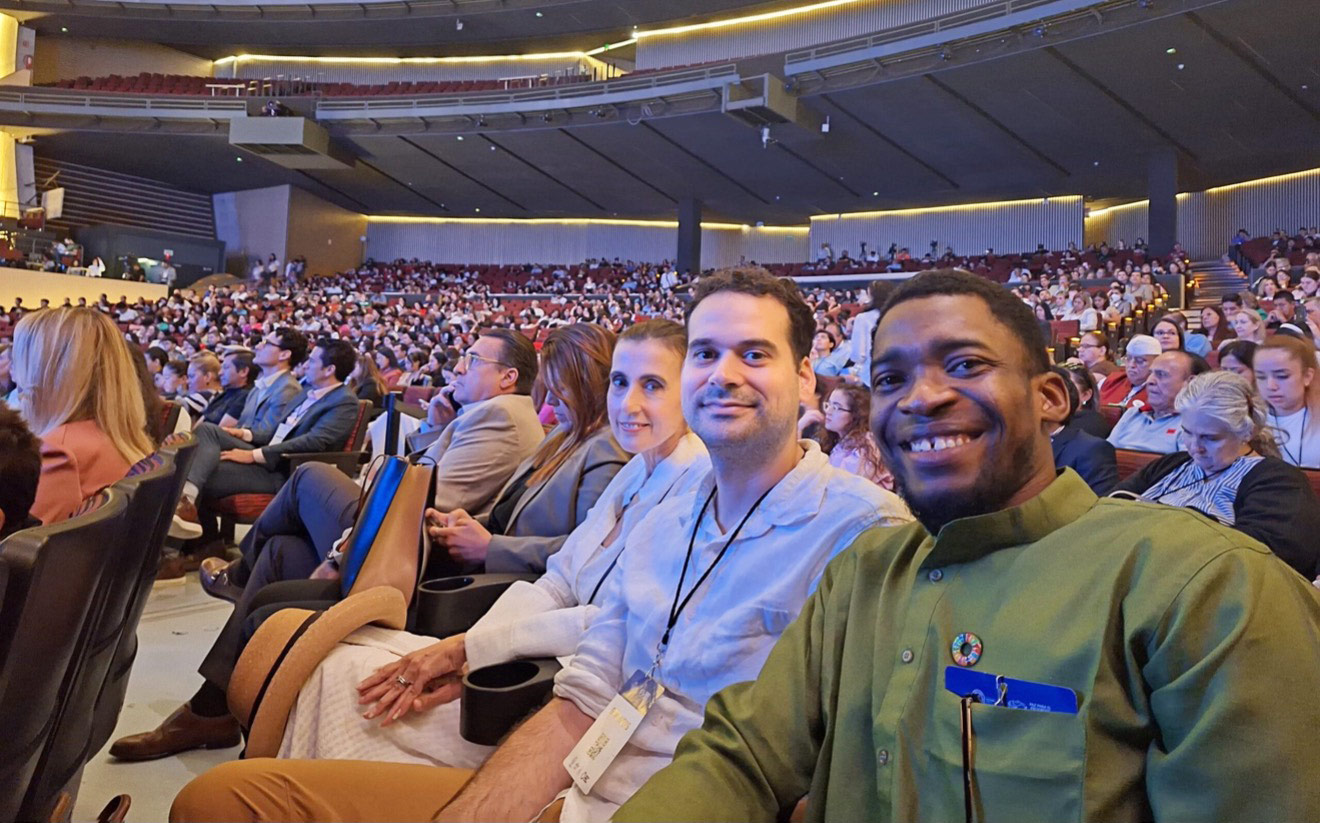
Kara Anastasio (wife of Dr. Hagelin) and students Dylan MacDonald and Sam Okorie in the audience in Monterrey.
World peace through inner peace
Dr. Hagelin had been invited by the Summit organizers to speak as part of the summative panel, titled “Global Peace: Time to Act,” on the last day of the conference—a fitting venue in which to present the GUSP approach to peace.
Earlier speakers had stressed that the world is now closer to nuclear war than at any time in history. Despite the passionate and heartfelt commitment to peace of all the conference speakers and participants, many of the discussions had focused on the challenges to global peace and the immense complexity of resolving these problems. Dr. Hagelin’s presentation, in contrast, offered a clear and compelling path forward to create global peace, here and now.
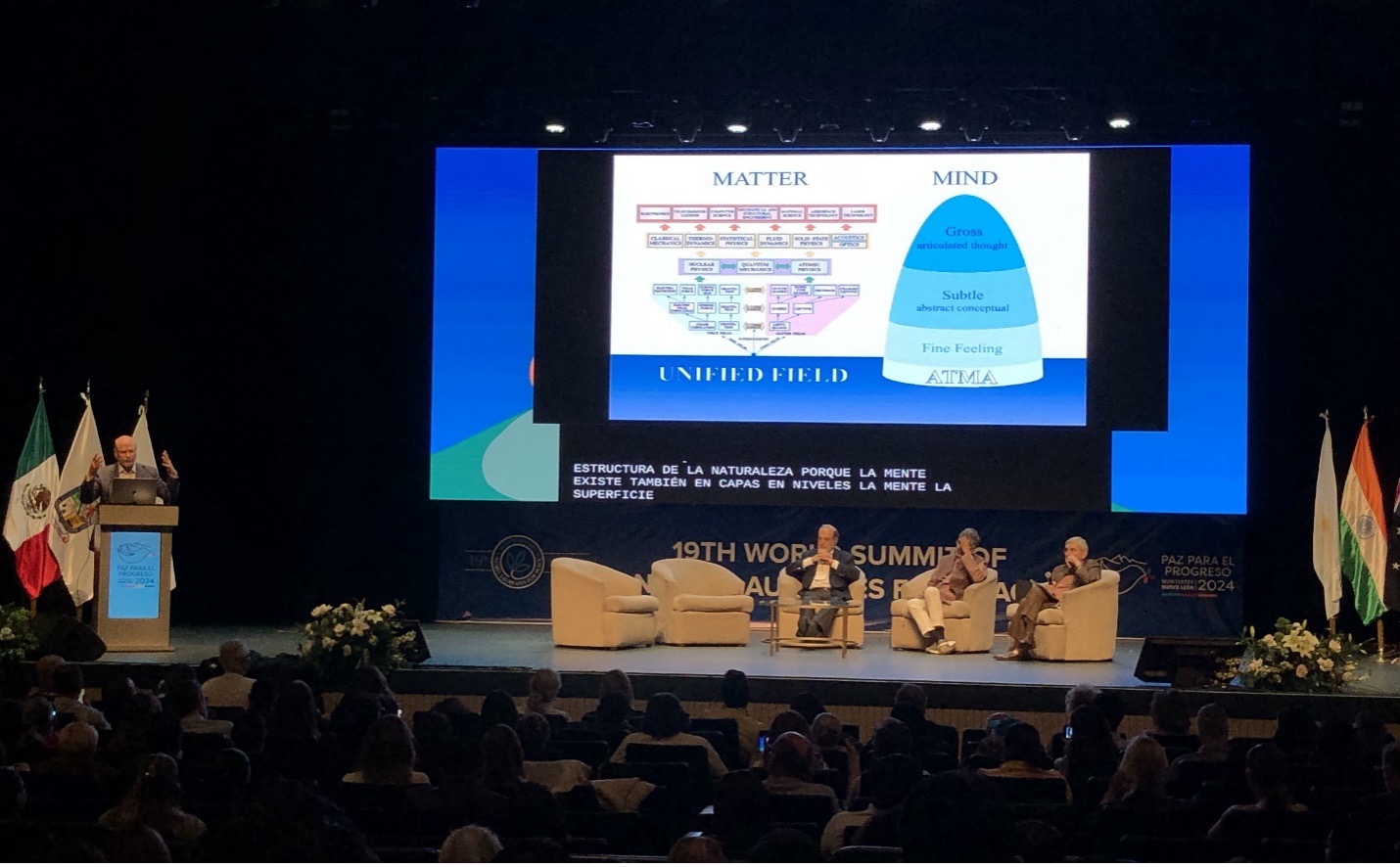
Dr. Hagelin addresses the World Summit.
The precursor to war and violence, Dr. Hagelin said, is stress. Stress in the individual shuts down the prefrontal cortex — the higher brain — while stimulating the amygdala, triggering the body’s fight-or-flight response. Mounting stress is causing ill health, psychological distress, depression, and anxiety, and rising levels of social violence throughout the world.
The traditional approach is to try to reduce the stressors — poverty, wealth disparity, and so on. But this has proven difficult if not impossible to do, he said. Instead, we can reduce the stress itself and thereby reduce violent behavior.
Dr. Hagelin reviewed studies showing how the Transcendental Meditation technique has been used effectively in prisons, significantly reducing recidivism, and how the Pentagon has used it to significantly reduce PTSD in veterans.
Then he showed how the same effect can be leveraged through large meditation groups to reduce stress throughout society. He summarized studies demonstrating how this approach reduced violent crime in Washington DC by 23% while improving the quality of life for the whole city. And he described how the same approach dramatically reduced the intensity of the Lebanese Civil War in the early 1980s, with seven different studies confirming this effect.
„No other approach to peace in history, as far as I know, has had a comparable track record of success,“ Dr. Hagelin said. „And this particular approach to peace is not that difficult. It’s relatively easily and cost-effectively implemented in schools and colleges“ as well as in the military and in police training.
„Even a small fraction of a population produces demonstrable results,“ he said, adding, „It has been very effective in Mexico itself in certain school programs here.“
He then described how the effect works — how Transcendental Meditation practice allows the mind to settle effortlessly inward to its basis in pure consciousness, which is identical with the unified field, understood in quantum physics to lie at the basis of all change throughout the universe.
„Meditation expands consciousness,“ Dr. Hagelin said. „It takes our scattered mental activity, our disorderly EEG, and transforms it into coherent brain functioning.“ Coherent brain functioning in turn is correlated with high IQ, learning ability, memory, intelligence, creativity, and moral reasoning.
„Regular practice of meditation brings inner peace, inner stability, inner fulfillment, inner contentment,“ he said. „It brings life-supporting behavior.“
As a result, he said, „You know yourself for what you really are — unbounded, universal being. And you recognize others as unbounded universal beings — you recognize others as your own self. That brings the golden rule of behavior. And that brings a peaceful world. This is world peace through inner peace, an evidence-based, scientifically proven process.“
Click here to watch Dr. Hagelin’s entire talk (password: peace). Click here for a video of all the Summit presentations on September 20 (Dr. Hagelin’s talk starts at 2:41:30).
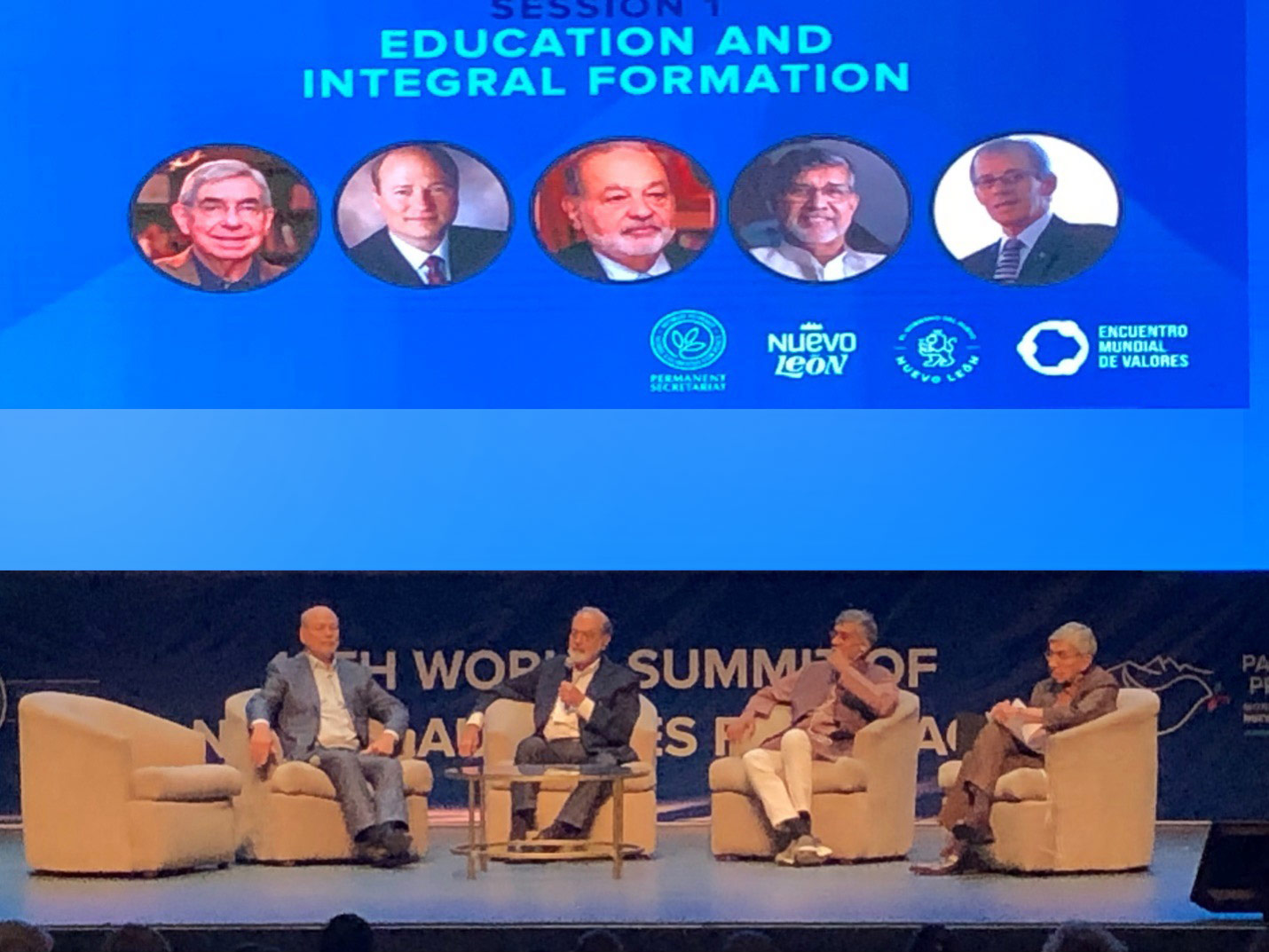
Dr. Hagelin with the other panelists: Carlos Slim, Kailash Satyarthi, and Óscar Arias Sánchez
A renowned panel of speakers
Dr. Hagelin’s Global Peace panel also included, as pictured above:
- Carlos Slim, the Mexican business magnate, investor, and philanthropist, ranked as the wealthiest person in Latin America and the 11th wealthiest in the world, according to Bloomberg (he was ranked #1 from 2010 to 2013 by Forbes), with a net worth of $105 billion.
- Kailash Satyarthi, the Nobel Peace Prize winner in 2014 along with Malala Yousafzai, for efforts to ensure child education and prevent child suppression. He presaged Hagelin’s talk by saying that consciousness is the foundation of life and that education is the birthright of all children.
- Óscar Arias Sánchez, the former President of Costa Rica, who won the Nobel Peace Prize in 1987 as the architect of a peace accord also signed by Guatemala, El Salvador, Nicaragua, and Honduras, designed to end the long-raging civil wars in those countries. He also won the Albert Schweitzer Prize for Humanitarianism and has been awarded fifty honorary degrees.
After his presentation, Hagelin met with Dr. Karen Hallberg to discuss future collaborative efforts. Hallberg, a prominent Argentinian physicist who also spoke at the Summit, has just been appointed Secretary General of the Pugwash Conferences on Science and World Affairs, an international organization founded in 1955 that brings together scholars and other leaders in pursuit of a world free of nuclear weapons and other weapons of mass destruction. The organization won the Nobel Peace Prize in 1995 for its work on nuclear disarmament.
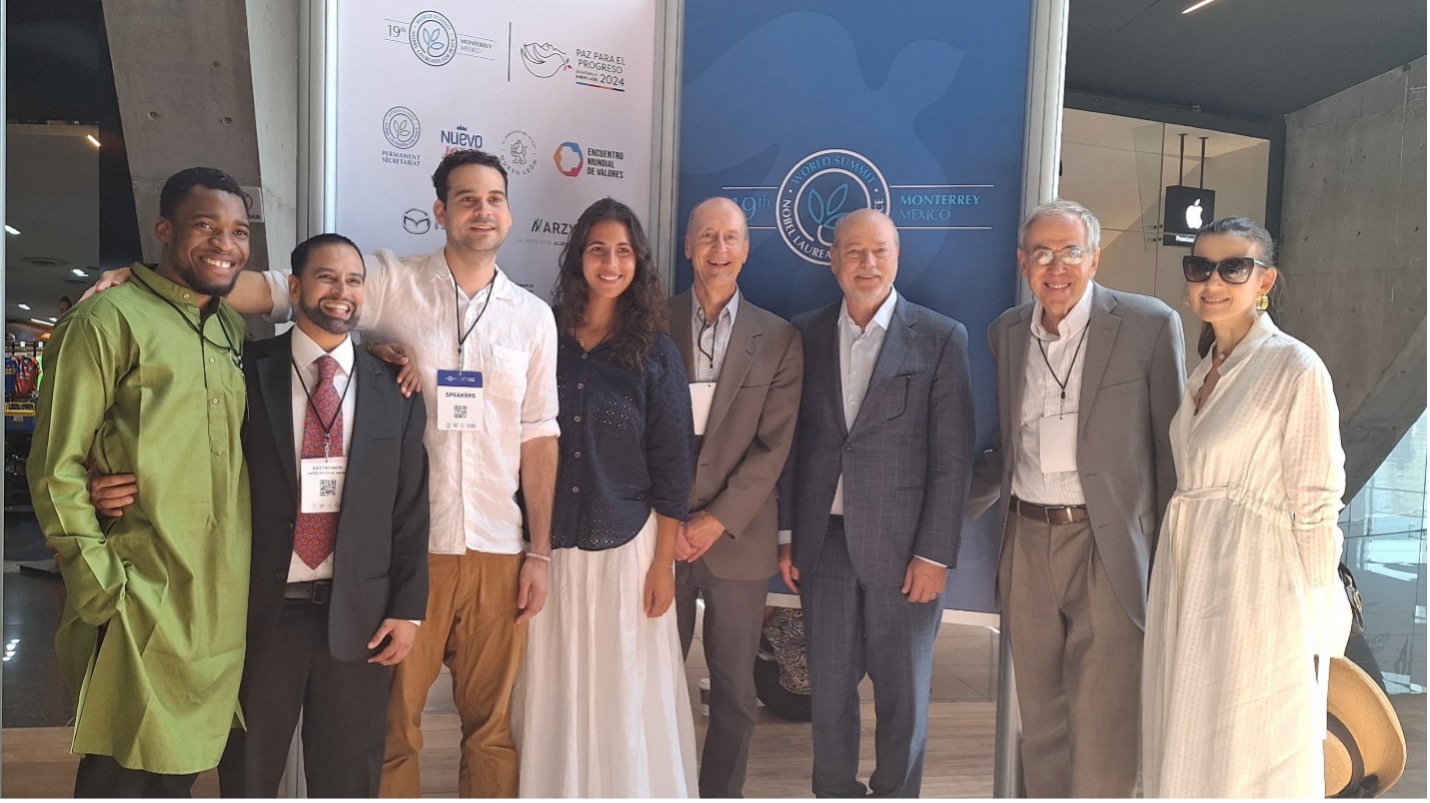
The presenters at the Summit. From left to right: Sam Okorie, Ash Pachauri, Dylan MacDonald, Muna Askar, Craig Pearson, John Hagelin, Gerry Geer, and Kara Anastasio.
Additional presentations and participants
Dr. Hagelin’s invitation to the Summit had been championed by Dr. Ash Pachauri, GUSP senior advisor on environmental security, who as senior mentor to the Protect Our Planet (POP) movement has been working closely with key Summit organizers for many years. He also helped ensure that Dr. Hagelin’s powerful slide presentation could be included during the Global Peace panel discussion.
Also accompanying Dr. Hagelin to the Summit were Maharishi International University faculty members Craig Pearson and Gerry Geer, who presented a youth workshop at the Summit that paralleled Dr. Hagelin’s talk and was attended by many enthusiastic and engaged students who were eager to bring this knowledge to their schools and universities. Three top MIU students—Sam Okorie, Dylan MacDonald, and Muna Askar—also attended the Summit and presented a compelling Peace Lab focused on implementing this GUSP approach to peace on a wide scale.
The future
Dr. Hagelin’s address at the World Summit of Nobel Peace Laureates was a truly historic moment—one that places the GUSP approach to peace on the global stage and gives it the international attention and prestige it deserves. The collaborations and connections resulting from this Monterrey Summit will help create a new wave of lasting peace around the world.
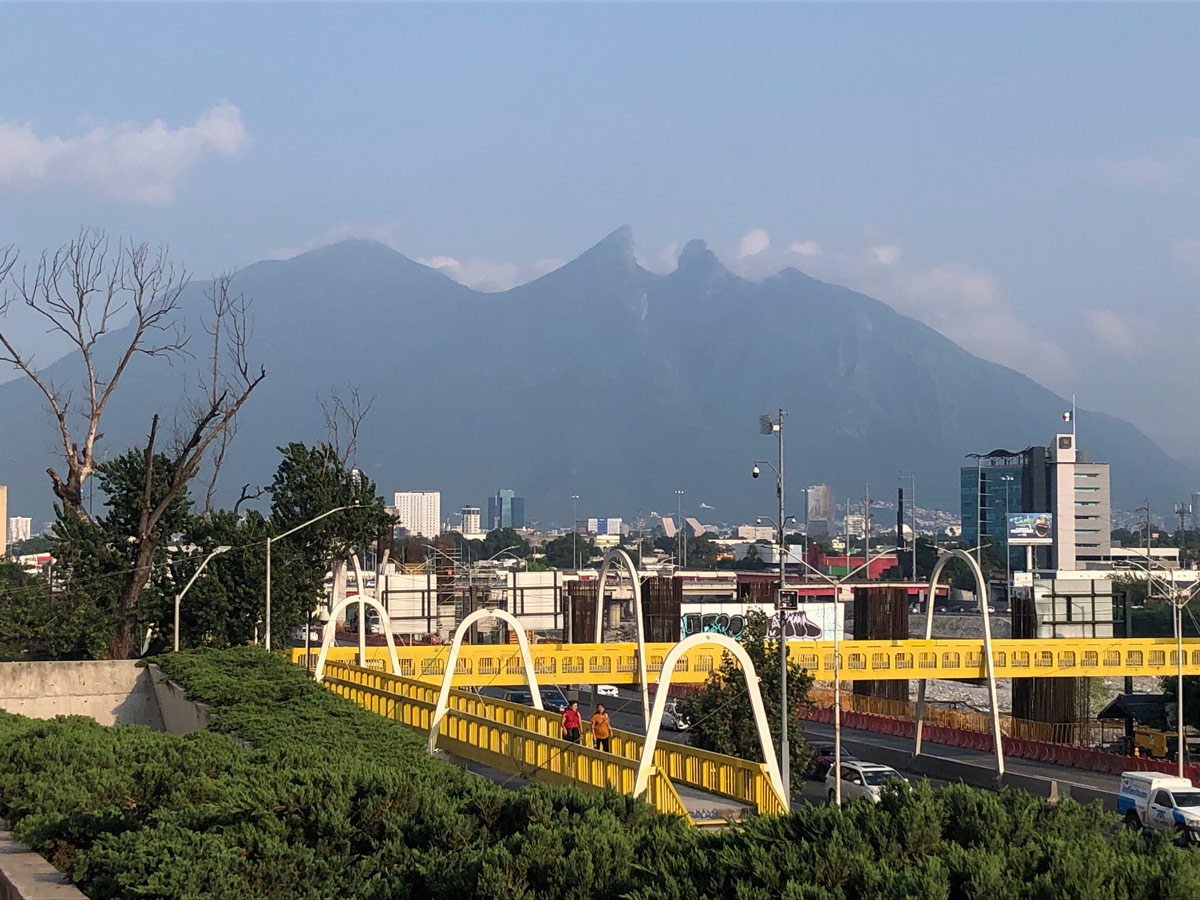
View from the Summit venue across Monterrey to the mountains of the Sierra Madre Oriental range. In the center is Cerro de la Villa, which translates to “Saddle Mountain” due to its distinctive shape.
—Written by Gerry Geer and Craig Pearson
